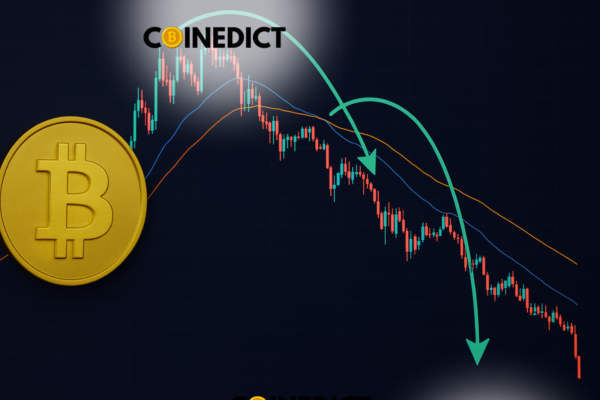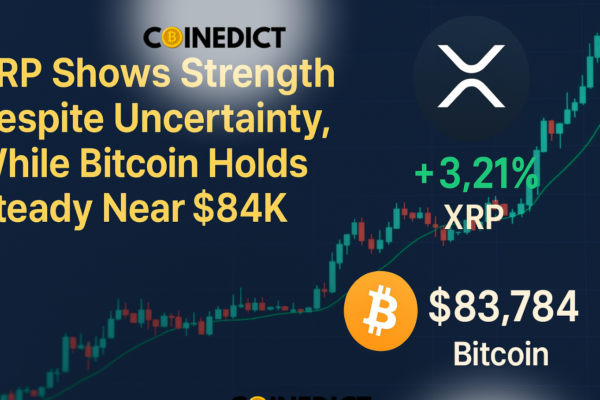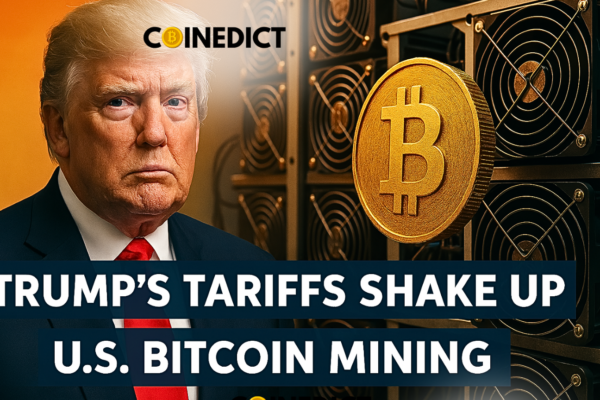
Argentina’s President Milei Under Fire as Congress Launches Crypto Scandal Investigation
Argentina’s President Javier Milei is facing growing political pressure after Congress voted to launch an official investigation into the collapse of the controversial LIBRA cryptocurrency — a memecoin he once publicly supported. The Argentine Chamber of Deputies approved the creation of a special investigative committee with 128 votes in favor, 93 against, and 7 abstentions. This commission will dig into the events surrounding LIBRA’s massive crash, which wiped out nearly 90% of its value in just one day, leaving investors reeling. What’s LIBRA, and why is it causing chaos? LIBRA was introduced earlier this year as a “private project” aimed at boosting Argentina’s startup and tech space. At its peak, the coin reached a market cap of $4.5 billion. But between February 14 and 15, everything came crashing down. Over 75,000 digital wallets were affected, and the total estimated investor losses hit a staggering $250 million. President Milei, who had once publicly backed the coin on social media (in a now-deleted post), has tried to distance himself, saying he wasn’t aware of the inner workings of the project. But that hasn’t stopped critics and investigators from digging deeper. Government officials under the spotlight The new congressional commission now has the power to summon key figures in Milei’s cabinet — including Economy Minister Luis Caputo and Justice Minister Mariano Cúneo Libarona — to answer questions about what role the government may have played in promoting the token. This isn’t the first time Milei’s name has come up in a crypto controversy. Back in 2022, he was also linked to another failed platform called CoinX, which led to a lawsuit. Legal action piling up In March, an Argentine lawyer filed a formal fraud complaint and called for the arrest of Hayden Davis, the CEO of Kelsier Ventures — the firm allegedly behind LIBRA. There’s also a U.S. law firm organizing a potential class-action lawsuit for international investors who suffered losses. Big-picture implications As lawmakers and investigators look into what went wrong, bigger questions are being asked: How much should public officials promote private ventures? And what kind of protections should crypto investors have? Interestingly, in the middle of all this, billionaire investor Tim Draper recently said Argentina — along with Uruguay — still has strong potential for growth, citing both countries as places that value “freedom and trust.” That optimism may be put to the test as this investigation plays out.









 Market at a GlanceAccording to CoinMarketCap, the total value of all cryptocurrencies dropped nearly 5% over the past 24 hours, pulling the market cap down to $2.42 trillion. Trading activity also cooled off significantly, with volumes dipping over 36%, a sign that traders might be pausing to figure out their next move. Bitcoin still leads with a dominance of 62.6%, despite falling 4.5% to roughly $76,300. Meanwhile, Ethereum saw a bigger drop — down more than 9% to about $1,447, making it the hardest-hit major token of the day. Solana, often spotlighted for being Trump’s crypto favorite, is trading around $105, while Tether remained steady, doing its job as a stablecoin amid the chaos.
Market at a GlanceAccording to CoinMarketCap, the total value of all cryptocurrencies dropped nearly 5% over the past 24 hours, pulling the market cap down to $2.42 trillion. Trading activity also cooled off significantly, with volumes dipping over 36%, a sign that traders might be pausing to figure out their next move. Bitcoin still leads with a dominance of 62.6%, despite falling 4.5% to roughly $76,300. Meanwhile, Ethereum saw a bigger drop — down more than 9% to about $1,447, making it the hardest-hit major token of the day. Solana, often spotlighted for being Trump’s crypto favorite, is trading around $105, while Tether remained steady, doing its job as a stablecoin amid the chaos.  What Experts Are SayingMany analysts believe this sharp sell-off is directly linked to the rollout of Trump’s 104% tariffs on Chinese goods, fueling fears of a renewed global trade war. “It seems like people have given up on any major crypto comeback — at least for the first half of this year,” said Sean McNulty from FalconX. He pointed out that traders are increasingly protecting themselves with bearish positions on Ethereum and Solana — not a great short-term sign. Riya Sehgal of Delta Exchange agreed, saying that the sudden Bitcoin drop below $75K signals just how sensitive digital assets have become to global politics. “Bitcoin is clearly behaving more like a risk asset now — its ties with the equity market are stronger than ever,” she added. Still, Sehgal pointed out a silver lining: long-term holders aren’t budging. Even as prices dip, they’re holding on, suggesting continued belief in crypto’s future as a store of value.
What Experts Are SayingMany analysts believe this sharp sell-off is directly linked to the rollout of Trump’s 104% tariffs on Chinese goods, fueling fears of a renewed global trade war. “It seems like people have given up on any major crypto comeback — at least for the first half of this year,” said Sean McNulty from FalconX. He pointed out that traders are increasingly protecting themselves with bearish positions on Ethereum and Solana — not a great short-term sign. Riya Sehgal of Delta Exchange agreed, saying that the sudden Bitcoin drop below $75K signals just how sensitive digital assets have become to global politics. “Bitcoin is clearly behaving more like a risk asset now — its ties with the equity market are stronger than ever,” she added. Still, Sehgal pointed out a silver lining: long-term holders aren’t budging. Even as prices dip, they’re holding on, suggesting continued belief in crypto’s future as a store of value.  Short-Term Pain, Long-Term Potential?While short-term recovery seems unlikely unless global trade tensions ease, experts aren’t losing hope altogether. Riya highlighted that the recent decision by the U.S. Department of Justice to shut down its crypto enforcement division could signal a shift toward a more crypto-friendly stance — especially with discussions around a national Bitcoin reserve heating up again. Edul Patel, CEO of Mudrex, is also cautiously optimistic: “Bitcoin is finding support near $74,500 and has bounced back to around $76,000. Whales are quietly accumulating, which usually hints at long-term strength.”
Short-Term Pain, Long-Term Potential?While short-term recovery seems unlikely unless global trade tensions ease, experts aren’t losing hope altogether. Riya highlighted that the recent decision by the U.S. Department of Justice to shut down its crypto enforcement division could signal a shift toward a more crypto-friendly stance — especially with discussions around a national Bitcoin reserve heating up again. Edul Patel, CEO of Mudrex, is also cautiously optimistic: “Bitcoin is finding support near $74,500 and has bounced back to around $76,000. Whales are quietly accumulating, which usually hints at long-term strength.”  Bottom LineThe crypto market might be in survival mode for now, but not everyone’s giving up. With whales buying and long-term investors staying put, the current drop may be more of a storm to weather than a sign of collapse. Just don’t expect blue skies until the tariff clouds clear.
Bottom LineThe crypto market might be in survival mode for now, but not everyone’s giving up. With whales buying and long-term investors staying put, the current drop may be more of a storm to weather than a sign of collapse. Just don’t expect blue skies until the tariff clouds clear.



 Thailand’s Crypto Mindset: Open to Growth, Cautious on Payments Here’s how Thailand looks at it: Crypto is an investment tool, not a way to pay for your groceries. The Bank of Thailand has made it clear that using crypto for everyday payments isn’t allowed — the price swings are just too wild, and they could shake up the country’s financial system. But when it comes to blockchain tech and trading crypto in a controlled environment? That’s totally encouraged — as long as the right rules are followed.
Thailand’s Crypto Mindset: Open to Growth, Cautious on Payments Here’s how Thailand looks at it: Crypto is an investment tool, not a way to pay for your groceries. The Bank of Thailand has made it clear that using crypto for everyday payments isn’t allowed — the price swings are just too wild, and they could shake up the country’s financial system. But when it comes to blockchain tech and trading crypto in a controlled environment? That’s totally encouraged — as long as the right rules are followed.  Who’s in Charge of What? Thailand has a few key players in its crypto game plan: They work together to make sure the space is safe and transparent.
Who’s in Charge of What? Thailand has a few key players in its crypto game plan: They work together to make sure the space is safe and transparent.  How It All Started Thailand didn’t just wake up one day and decide to regulate crypto. This has been a years-long process: It’s been a step-by-step journey, but a pretty forward-thinking one.
How It All Started Thailand didn’t just wake up one day and decide to regulate crypto. This has been a years-long process: It’s been a step-by-step journey, but a pretty forward-thinking one.  Rules for Crypto Businesses Want to run a crypto exchange in Thailand? You’ll need to:
Rules for Crypto Businesses Want to run a crypto exchange in Thailand? You’ll need to:  Crypto & Taxes in Thailand Yes, crypto gains are taxed. The more you earn, the higher the rate — up to 35%, based on your income. Some transactions (like on licensed exchanges) get VAT exemptions, but most people still need to report their earnings.
Crypto & Taxes in Thailand Yes, crypto gains are taxed. The more you earn, the higher the rate — up to 35%, based on your income. Some transactions (like on licensed exchanges) get VAT exemptions, but most people still need to report their earnings.  ICOs, NFTs & DeFi — Where Do They Stand? It’s a work in progress — and the government’s taking its time to get it right.
ICOs, NFTs & DeFi — Where Do They Stand? It’s a work in progress — and the government’s taking its time to get it right.  Thailand’s Big Move: A Digital Currency of Its Own Thailand is working on its very own digital currency — kind of like a crypto version of the Thai baht. It’s already been tested for things like retail shopping and even cross-border payments with other countries. The goal? To make money transfers faster, cheaper, and more secure.
Thailand’s Big Move: A Digital Currency of Its Own Thailand is working on its very own digital currency — kind of like a crypto version of the Thai baht. It’s already been tested for things like retail shopping and even cross-border payments with other countries. The goal? To make money transfers faster, cheaper, and more secure.  Adoption Is Growing More Thai people are holding crypto now — almost half of the people who know about it own some kind of digital asset. Businesses are getting more interested, too, especially banks. Still, crypto payments aren’t widely accepted due to strict rules, and the government continues to push for better education around risks.
Adoption Is Growing More Thai people are holding crypto now — almost half of the people who know about it own some kind of digital asset. Businesses are getting more interested, too, especially banks. Still, crypto payments aren’t widely accepted due to strict rules, and the government continues to push for better education around risks.  Not Without Challenges No system is perfect, and Thailand’s crypto space has its hurdles:
Not Without Challenges No system is perfect, and Thailand’s crypto space has its hurdles: 




 Fake social media accounts (34%) impersonating well-known figures or projects
Fake social media accounts (34%) impersonating well-known figures or projects